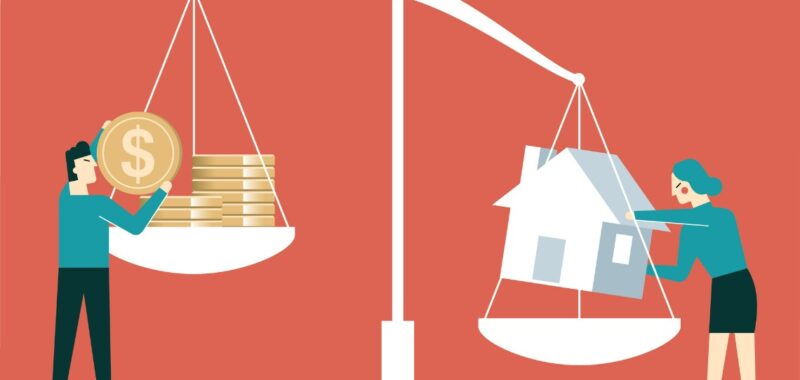Housing affordability—the hurdle holding many potential buyers back from taking the leap into ownership—remains a distinct challenge in the market as more than 80% of metro markets registered home price gains in Q1 2025, according to a new report.
The National Association of REALTORS®’ (NAR) latest Metropolitan Median Area Prices and Affordability report found that 189 out of 228 metro areas (83%) saw increases in home prices in Q1, and 11% of the 228 metro areas recorded double-digit gains (down from 14% in Q4 2024). On the opposite end of the spectrum, 17% of markets (38 of 228) saw price declines in Q1, up from 11% in Q4 2024.
Nationally, the median single-family existing-home price grew 3.4% to $402,300, which is a slight decrease from last quarter’s 4.8% appreciation. Regionally, the South saw the smallest year-over-year price appreciation at 1.3%, followed by the West at 4.1%, the Midwest at 5.2% and the Northeast at a whopping 10.3%.
Of the top 10 overall most expensive markets, eight were in California. Those markets were San Jose-Sunnyvale-Santa Clara, California ($2,020,000; 9.8%); Anaheim-Santa Ana-Irvine, California ($1,450,000; 6.2%); San Francisco-Oakland-Hayward, California ($1,320,000; 1.5%); Urban Honolulu, Hawaii ($1,165,100; 7.3%); San Diego-Carlsbad, California ($1,036,500; 5.7%); Salinas, California ($954,700; 6.2%); San Luis Obispo-Paso Robles, California ($953,400; 4.8%); Oxnard-Thousand Oaks-Ventura, California ($931,500; 2.5%); Naples-Immokalee-Marco Island, Florida ($865,000; 1.8%); and Los Angeles-Long Beach-Glendale, California ($862,600; 4.8%).
The top 10 large markets with the biggest year-over-year median price increases all experienced gains of at least 10%. A total of six markets were in New York and Ohio. Those top 10 large markets were Syracuse, New York (17.9%); Montgomery, Alabama (16.1%); Youngstown-Warren-Boardman, Ohio-Pennsylvania (13.6%); Nassau County-Suffolk County, New York (12%); Toledo, Ohio (11.1%); Cleveland-Elyria, Ohio (11.1%); Rochester, New York (11.1%); Gulfport-Biloxi-Pascagoula, Mississippi (10.5%); Trenton, New Jersey (10.4%); and Allentown-Bethlehem-Easton, Pennsylvania-New Jersey (10.2%).
NAR Chief Economist Lawrence Yun noted that “very expensive home prices partly reflect multiple years of home underproduction in those metro markets.”
“Another factor is the low homeownership rates in these areas, implying more unequal wealth distribution,” he continued. “Affordable markets tend to have more adequate supply and higher homeownership rates.”
Yun added that “a few areas where home prices declined a year or two ago are now rebounding, including Boise, Las Vegas, Salt Lake City, San Francisco and Seattle.”
He continued, noting that “some markets currently experiencing price declines—but with solid job growth—could see prices recover in the near future, such as Austin, San Antonio, Huntsville, Myrtle Beach, Raleigh and many Florida markets.”
With continued home price gains, housing affordability data overall remains elevated, with some very slight improvements in Q1.
The monthly mortgage payment on a typical existing single-family home with a 20% down payment was $2,120, only a slight $2 decrease from Q4 2024 ($2,122)—but up a stark 4.1% ($84) from one year ago. Families also typically spent 24.4% of their income on mortgage payments, a slight decrease from 24.8% in Q4 2024 and 24.5% one year ago.
First-time buyers continued to face hurdles when trying to break into the market.
A monthly mortgage payment on a typical starter home (valued at $342,000 with a 10% down payment loan) declined to $2,079, a $2 decrease from the prior quarter ($2,081), but a distinct $82 increase (4.1%) from one year ago ($1,997). First-time buyers also typically spent 36.8% of their family income on mortgage payments, down slightly from 37.4% in the previous quarter.
Families needing qualifying incomes of $100,000 for a 10% down payment grew from 43.8% of markets last quarter to 45.1% of markets in Q1. However, families needed a qualifying income of less than $50,000 to afford a home in 3.1% of markets, a slight improvement from 2.2% in the previous quarter.

